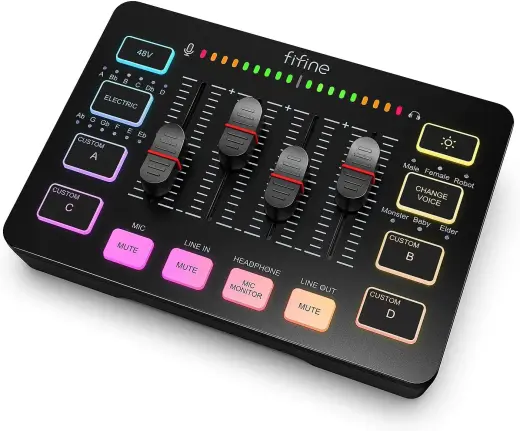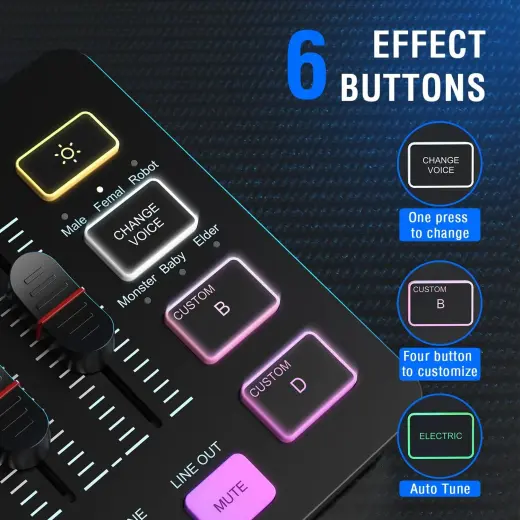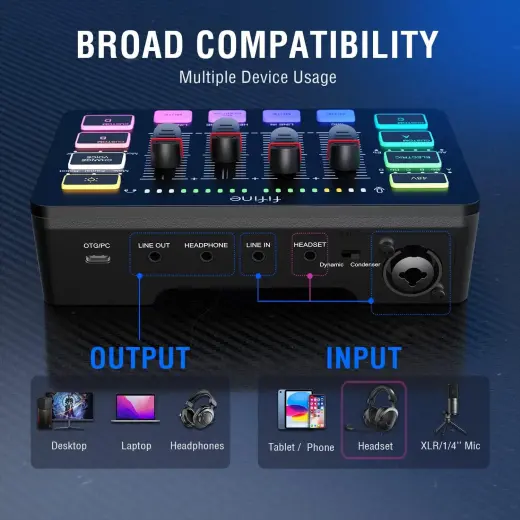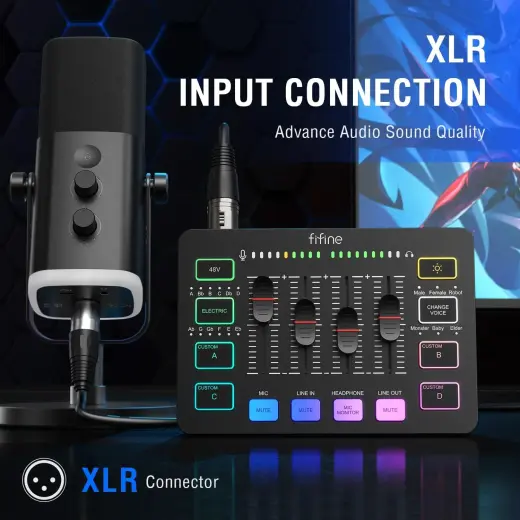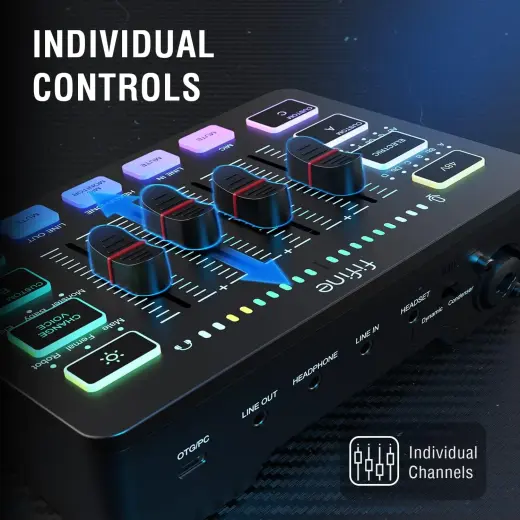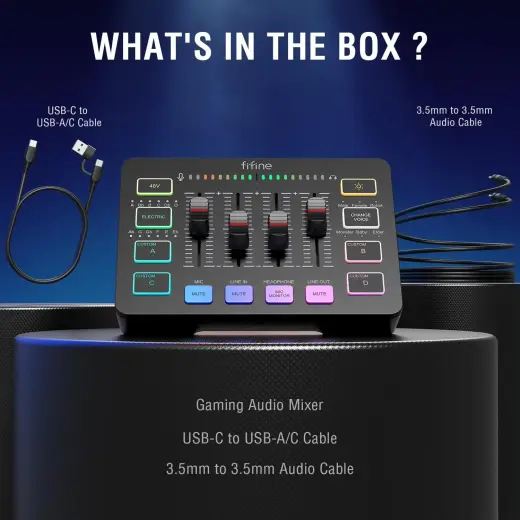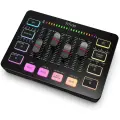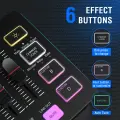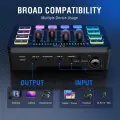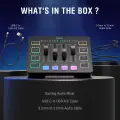- If you are one of those gamers who play a lot online with friends but stick with a pair of 3.5mm headset, you have come to the right place to find the once-for-all audio solution. Let the SC3 gaming interface be out in force!
- How comes? You don’t have to buy a fancy XLR microphone to actually use it, just pick up a pair of headset in your hand, which doesn’t have many features or has a pretty crappy microphone. With a bunch of audio enhancements that the SC3 audio mixer can provide, you are able to unlock the full potential of your old headset and reinvent it in terms of input audio quality.
With the XLR balanced port that provides up to 50dB gain, you will not be limited with microphone options when you make the decision to go with a better audio flow. As an advanced gamer that you are or you will become, an upper level of control is a must-have. And instead of controls built-in software, it is a not just nice but convenient touch to press the buttons, turn the dials or maneuver the faders on the desk. Besides, you can spot the exact setting running with just a glance without tabling out of the game.
For the price, it will never be snake oil. For the features, it will easily become the workhorse in your studio. It works straight out of the box to up your audio game without blowing your budget for getting more expensive gear to complement with it.
First off the meat and potatoes of an audio mixer, the preamp. It is not the beefiest one, but the 50 dB gain it provides when the microphone type switch is toggled to “dynamic” is neither the humblest nor on par with the basic models from Behringer or PreSonus.
We do not cut corners on the mic jack either, which is a combo jack allowing XLR and TRS balanced microphone input. Unexpectedly, the 48V phantom power comes as a standard for the XLR input. But if you are also looking for an instrument input, this SC3 might not be the ideal choice, instead, we have the recording mixer out there for you.
The same story can be found on the 3.5mm monitoring jack, you can comfortably use it with a pair of high-impedance (up to 250 ohms) headphones. You might not need such high-fidelity headphones for gaming, especially since not every gamer would like to enable the sidetone, but it is just good to know that your device can drive one of those high-end gear.
Mic Input
Table header 1
Frequency Response
20-20kHz
Dynamic Range
75dB
S/N Ratio
>75 dB
Gain Range
50dB
Headphone Output
Frequency Response
20-20kHz
Output Power
15mW into 32ohm
Output Impedance
32-250Ω
Dynamic Range
90dB
Line Output
Frequency Response
20-20kHz
Dynamic Range
85dB
S/N Ratio
>80 dB
Maximum Output Level
+10dBV
Line Input
Frequency Response
20-20kHz
Dynamic Range
75dB
Gain Range
50dB
Computer I/O
USB Type-C to USB Type-A 2.0 & Type-C
Power Consumption
Voltage: 5±0.25 V
Current: 500mA
Bit Depth/Sample Rate
16-bit/44.1k-48k Hz




